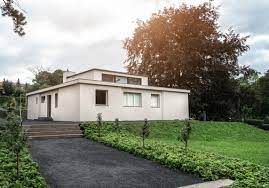Bauhaus Teil II
- Anke Schwittay

- Mar 8, 2020
- 3 min read
Updated: Sep 14, 2021
This post chronicles further ideas and inspirations from my current visit to the new Bauhaus museums in Germany. I am here to find out what the Bauhaus, as a radical educational experiment aiming to realize a vision of a better future at times of great economic, political and social turmoil, might offer creative teaching for today’s global challenges. In my first post I wrote about the context in which the Bauhaus was formed and its general teaching methods, and in this post I reflect how its attitude towards technology and the role of women at the Bauhaus might be relevant.
In 1923, as one of the conditions for continued funding from the regional government, the Bauhaus organized a major exhibition that brought its achievements to international attention. Its motto – Art and Technology: A New Unity – reflected the relationship that the Bauhaus wanted to establish between new technologies, the arts and crafts and industrial production. The school’s founder, Walter Gropius, had fought at the Somme during WWI and seen first-hand the devastation that technological innovation can bring. He returned with a belief in radical social reform in which creative people played a direct role. Rather than rejecting technology altogether, he and teachers like Laszlo Moholy-Nagy, aimed to bring the art, crafts and industry, machines and humans, together in new ways. At the beginning of the 20th century, increasing industrialization, mass production and standardization raised important questions about the role of the individual, crafts people and artistic elements and about the connections between society and technology more general. I see the same questions being asked today in relation to new digital and bio-technologies and artificial intelligence and their remaking of human life, social relations and capitalist models. (For an insightful but frightening picture, Shoshana Zuboff’s recent take on surveillance capitalism is a good but hefty read).
One of the main attractions of the Bauhaus exhibit was Das Haus am Horn, a model house that was built on the outskirts of Weimar. Designed by the Bauhaus Masters and furnished entirely by students, including textiles, high fittings and wall paintings, the house gave material form to many of the modern ideas of the school. It showed that the Bauhaus was not only about educating students but about reeducating the public to live more economically and functionally. The use of new materials, open space and room divisions, such as a separate bedrooms for spouses, revealed radical ideas and changing social norms. According to the exhibit, the house stood out like a sore thumb among the villas that adorned the road and critics called it a ‘house for martians.’

The house’s modern character was especially evident in the kitchen and its new domestic technologies. Showcasing Germany’s first fitted kitchen, furniture was arranged ergonomically in the taylorism-inspired sequence of cooking tasks to get rid of unnecessary movement, time and energy expenditure. The kitchen containers were in specific logical order and easy to access and clean. The oven and roaster ran on gas, cooking vegetables that were grown behind the house. (The gardens are where the Bauhaus students themselves grew vegetables for the communal canteen). An advertisement video in the main Bauhaus museum had compared more traditional kitchens and their laborious and unhygienic ways to the new kitchen, in which a woman dressed in a 1920s flapper outfit was happily working away. It was the woman though doing the housework, just as open doors to the children and living room enabled her to supervise the children more easily.
This speaks to an interesting tension about the role of women at the Bauhaus, about which many good books have been written. While Gropius welcomed female students, who initially outnumbered men, the master teachers were predominantly male with the exception of women teaching rhythmic dance and weaving. Similarly, female students were initially only allowed to apprentice in the weaving workshop (which incidentally was the only one making commercially viable products that provided a much needed source of income for the school), as it was thought that work in wood, metal or theatre workshops might be too physically demanding for them. Women like Gunda Stoelzl, Annie Albers and Marianna Brandt, who was the first woman allowed in the metal workshop and later became its master, went on to make names for themselves as successful designers but are still much less known than famous male Bauhaus masters and alumni.
In 1924, the Weimar Bauhaus lost political and financial support when a new right-wing nationalist government came to power in Thuringia. It moved to Dessau in 1925 and then to Berlin, where, branded as Bolshevik and degenerate, it was closed in 1933, in one of the first acts after the Nazis came to power. While some of its students were imprisoned, others collaborated with the Nazis in the design of concentration camps, including Buchenwald. Tomorrow I will travel to Dessau to learn more about the continuation of the experiment that was the Bauhaus.







Comments